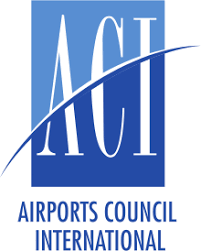 Airports Council International (ACI) World this week launched its Airport Economics Report and Key Performance Indicators (KPIs) for 2020, providing the first in-depth global breakdown of airports’ financial activities during the first year of the pandemic.
Airports Council International (ACI) World this week launched its Airport Economics Report and Key Performance Indicators (KPIs) for 2020, providing the first in-depth global breakdown of airports’ financial activities during the first year of the pandemic.
Although all non-aeronautical sources declined in 2020 compared with 2019, those directly affected by passenger volume suffered the most, such as retail concessions (-65.2%).
Revenues from aeronautical passenger-related charges saw the largest declines (-65%) in tandem with the historic collapse in traffic. Although airports supported air cargo operations amidst the pandemic, revenues from landing charges plummeted -42%.
ACI says that the airport industry remains asset intensive, characterized by predominantly high fixed costs necessary for maintain-ing and operating the infrastructure, such as runways, taxiways, aprons, parking stands, and terminal buildings.
Even though total airport costs dropped in absolute terms, costs on a per-passenger basis increased 91.8%. This is the result of passenger traffic plummeting compared to a fixed cost base.
With many airports freezing or waving certain aeronautical charges in tandem with rent relief on the commercial side of the business, unit revenues were significantly lower than unit costs during 2020.
Airport charges vital for sustained recovery
Revenues from airport charges remain vital to airports in recover-ing costs, the investment in infra-structure needed to meet future demand, and for the ultimate benefit of the traveling public and local communities, says ACI.
The organization argues against “disproportionate regulatory regimes” that it says hinder flexibility in setting the right level of charges and can represent an additional impediment to airport development.
“For airports, this means financing unavoidable high fixed costs that come with being infra-structure-intensive businesses—through more efficient charging system,” said ACI World Director General Luis Felipe de Oliveira.
ACI advocates that airport charging policies should be focused on market needs and signals and says that the best way forward is through commercial agreements between airports and airlines.
ACI has launched a new series of guidance material to strengthen airports’ non-aeronautical revenue and activities. To download the excellent White Paper on Airport Concession Agreements, click here.
For the White Paper on Business Models between Airport Operators and Concessions, click here. This resource outlines the main types of contractual relation-ships between airport operators and concessionaires and looks at the advantages and disadvantages for concessions agreements, master concession agreements, joint venture, supply contract and management contract.









